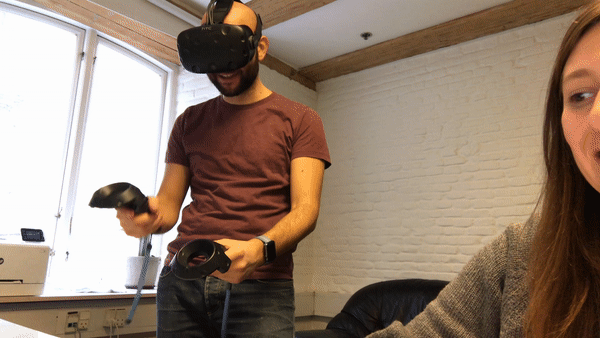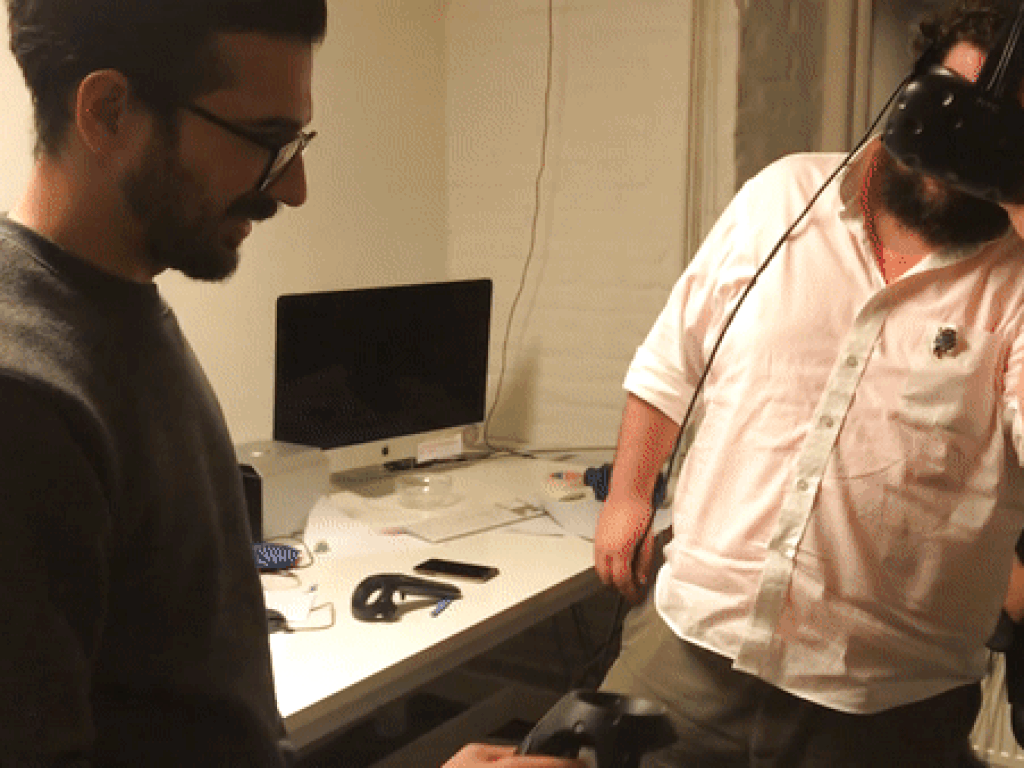a VR concept:
Interreality 101
A research project exploring interactions at the intersection of virtual and conventional reality
realized by Anna Smeragliuolo

Virtual reality (VR) and conventional reality (CR) are often positioned as being at odds with each other. Using a VR headset creates an immersive but also isolating experience. You lose connection to those sharing your physical space, and even conversation with CR parties becomes difficult to hear or address. As the industry continues to speculate about the potential of VR, its CR surroundings (people included) are typically ignored. Interreality 101 is a project that starts to define the space where these two realities overlap.
where it began:

Interreality was inspired by social VR platforms. These platforms are designed for remote communication. Using VR in a traditionally social scenario (i.e. with friends in physical proximity), is one that has surprisingly been overlooked. I wanted to explore what that scenario might look like.
how it became:
To investigate these interactions, I conducted a co-creative workshop and ran a series of different experiments to see how we could engage both VR and CR parties in a single shared experience. Each one revealed assumptions I did not know I had, which I was able to use to guide the direction of each new iteration.what it begot:
Five principles for designing interactions between virtual worlds and coventional company1. Be physical - Figure out ways to engage your whole body. Think about bodies in terms of input and feedback, and how they can reveal information about the reality you aren’t in.


2. It feels good to work together - It is especially important to consider when changing VR from an individual to a group experience. Collaborating is a good way to keep both parties engaged.
3. Create imbalances - Give each party access to different information. Think about the things you can’t see while wearing a headset, as well as what you can. This encourages communication between realities.


4. Adjust controls - Explore ways to use the hardware “wrong.” This can be as simple as dividing the controls across parties. Taking away or inverting controls can deepen an interreality experience by creating imbalances for participants to reconcile.
5. Consider space - Virtual space needs conventional space to exist. Instead of eliminating the actual space around you in favor of a simulation, try to use it to your advantage. Shared spatial understanding helps people interact across realities.

more, reiterated
more still